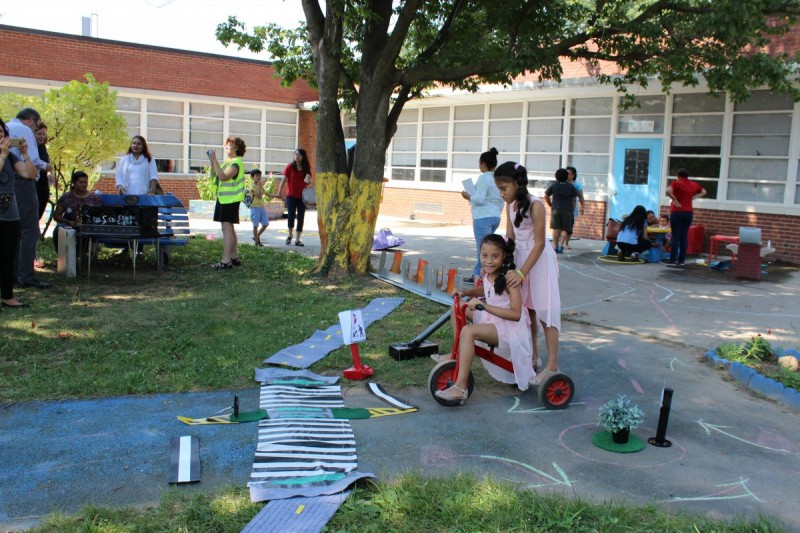Walking, Voting Rights, and Why #SafeRoutestoVote Matters
This blog post was written by Sara Zimmerman and Marisa Jones.

The Grocery Bag Challenge
In 2015, the American Heart Association in Hampton Roads, Virginia added a new dimension to its annual 5k Heart Walk by inviting participants to take the Grocery Bag Challenge. Participants carried an eight-pound grocery bag for one mile of the walk to raise awareness of the difficulty faced by people without convenient transportation or grocery stores close to home. Participants reported that it was much harder than they expected!
Congressional Update: Progress on Spending Bills; Concerns on Automated Vehicles Bill
Traffic Gardens to Teach and Inspire Kids
This guest blog post was written by Tiffany Lam, research adviser.
Some schools are experimenting with traffic gardens like the one pictured above. Photo: Fionnuala Quinn/Bureau of Good Roads
Four Things Healthy Food Advocates Can Do to Improve Access for People Without Cars
“There are too many places in this country where it’s easier to buy a grape soda than a bunch of grapes,” explains Caroline Harries, Associate Director at The Food Trust, when she describes food deserts. Although there are many definitions of food deserts, they are commonly understood as places where fresh, nutritious foods are not accessible within a reasonable or convenient distance to travel. They are often defined as one mile in an urban area and ten miles in a rural area. In a car, those distances are no problem.
Safe Routes to Groceries in Cleveland’s AsiaTown
In winter 2017, our team got a question: “Have you ever looked at how people can walk to and from grocery stores from senior centers? Maybe Safe Routes to Grocery Stores?” We were thrilled. We had been working for the past year to refine a concept called Safe Routes to Healthy Food, which works to overcome the barriers to walking, biking, and taking public transportation to places where people get healthy foods. This was a chance to dive in to see how the challenges and solutions we’d been exploring played out in a real neighborhood. Asian Services in Action, Inc.


